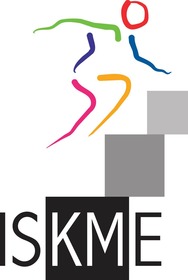ISKME's Open Educational Practice Rubric
Overview of the Rubric
This rubric defines a set of open educational practices that help educators to advance a culture of open education, and to advocate for the potential benefits of open educational resources (OER) in the context of continuous improvement. The rubric is intended to guide educator practice in working with OER to ensure that every student has the opportunity to engage in learning effectively. The rubric supports educators in accessing, curating, evaluating, and adapting OER in response to students’ particular needs, interests, and contexts, to author and share original or remixed resources, and to disseminate approaches to the implementation of those resources for future OER users to benefit from.
| A. Understand the Uses and Benefits of OER: Educators understand and can articulate the role of OER for curriculum and courseware improvement, and the impact of OER on teaching and learning | Begins by: Developing expertise on different use cases for OER, and the importance of the shift to an open digital model on their campus. |
| B. Find and Curate OER: Educators can discover and organize quality OER for teaching and learning on their campus | Begins by: Using search and curation tools to discover OER, and identifying and organizing OER to support the school’s curriculum and courseware and student learning needs. |
| C. Build OER Curriculum and Courseware: Educators can lead in the role of creating or adapting OER for integration into their curriculum and courseware | Begins by: Gaining skills using digital content creation tools to author or remix OER (e.g., Open Author), and creating OER to meet local teaching and learning needs. |
| D. Evaluate and Align OER: Educators can evaluate OER in alignment with local or established quality criteria | Begins by: Applying learning standards to new and existing OER content to support usability of the resources. |
| E. Assess and Apply Open Licenses: Educators can apply the correct use of open licenses when selecting, using, or authoring resources. | Begins by: Understanding copyright and use permissions, and open licensing differences, the role of use permissions in enabling OER use and reuse |
| F. Share and Collaborate on OER: Educators can contribute to local, state, national or global “commons” of shared OER, and understand their roles as collaborative thought partners in OER creation and use | Begins by: Publishing OER individually; using digital tools (e.g., ratings, commenting and discussion features) to share feedback to others on OER. |
| G. Advocate for OER and Open Educational Practice: Educators are able to advocate to peers within and beyond their campuses, and share OER-based approaches to teaching and learning | Begins by: Gaining skills to leverage social media networks and other advocacy strategies, such as the creation and sharing of articles, blogs, and videos to targeted audiences. Continues by: Participating in outreach activities across the campus or region, including conference presentations and workshops in the wider education community. Encouraging and supporting new OER champions on their campus. |
More About the Open Educational Practice Rubric
The Open Educational Practice rubric grew out of ISKME’s OER impact research and our OER professional learning offered to educators in the U.S. and internationally since 2007. Building the capacity of educators to identify, evaluate, adapt, share, and collaborate on all aspects related to OER has been our primary goal, recognizing that there is a global need to: (1) equip all educators to be part of instructional leadership through OER, and (2) support education leaders and administrators in enabling a transformative shift from a proprietary to an open and participatory model of open educational practice. The rubric is intended to be used by those engaging in open educational practice--to prioritize how stakeholders want to enhance their practice moving forward, as well as to enable the assessment of current practice by stakeholders to ensure continuous learning in the field.
Open educational practice comprises a skill set in collaboration, curation, curricular design, and leadership. The rubric articulates specific competencies in instructional leadership and practice as acquired through the ongoing curation, adaptation, and collaborative use of OER. The performance indicators listed within the rubric require that participants demonstrate understanding of the role of OER for contributing to curriculum and courseware improvement and advancing instructional goals.
Educators, including teachers, librarians, faculty, and administrators, are using this rubric to guide and assess the current status of open education in their classrooms and institutions; and to identify and prioritize the objectives that will help transform their practice through OER engagement. Districts can use this rubric to provide an overview of open educational practice skills to their OER early adopters and champions, and discuss which areas they wish to advance in their OER implementation States can use this rubric to assess, prioritize, and advance their collaborative effort to identify, evaluate, curate, and share OER with curriculum and courseware specialists across the state.
ISKME 2017 - CC BY-SA
